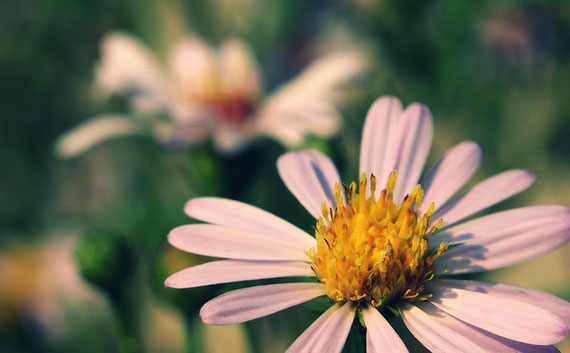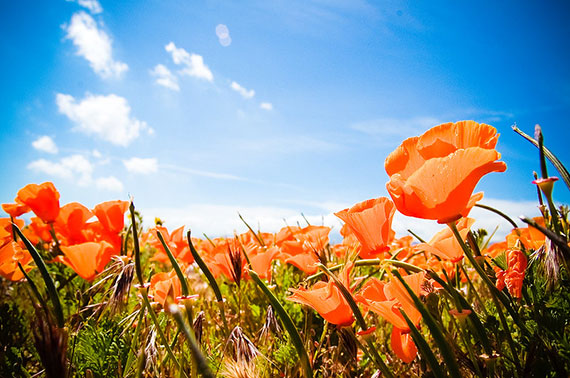There are few subjects that draw photographers as much as wildflowers. Why shouldn’t it be so? After all, wildflowers seem to offer the photographer so much: striking hues, graceful curves, and dramatic color contrast. It’s no wonder that so many people photograph wildflowers. However, like any other area of photography, creating wildflower images that rise above the ordinary requires knowledge and skill. This article looks at seven ways to create great wildflower images.

Photo by urbanworkbench; ISO 400, f/9.0, 1/500-second exposure.
Pristine
In order to create great wildflower images, one must start with the proper components. In this case, the proper components are the wildflowers. However, not just any wildflower will do. The wildflowers must be in pristine condition. Wildflowers that are not perfectly fresh, have marks, or have been partially eaten by bugs should not be used.
Center of Interest
A great wildflower photo needs a strong center of interest (COI). The COI is the thing that grabs the attention of the viewer. For example, the COI might be a ladybug on one of the wildflower pedals or a brightly colored wildflower center. The point is that the COI not only serves to grab the viewer’s attention but also to hold it. Without a strong COI, the viewer quickly loses interest and moves on to something else.
Composition
Composition consists of how the objects in an image are arranged with respect to each other. Now, there are various ways to compose an image. One of the most popular ways is called the rule of thirds. The rule of thirds states that an image should be divided into thirds both vertically and horizontally. The COI should be placed at one of the intersections of the dividing lines.
Application of the rule of thirds helps make an image more dynamic and balanced. In fact, research has shown that people’s eyes tend to gravitate to the areas of an image located at the intersections of the dividing lines of the rule of thirds. In contrast, placing the COI at the dead center of the image can make the image have a very static feel. Placing the image at other locations can often make the image appear unbalanced.

Photo by chenjack
Subtraction
Now that the COI has been identified and properly placed in the image, the rest of the elements in the image should help strengthen the COI. In other words, they should help direct the viewer’s attention to the COI. This is where the art of subtraction becomes important. The art of subtraction involves removing everything in the image that does not support the COI.
For instance, if there is a stick or rock at the edge of the viewfinder that does not help the COI in any way, the image should be recomposed to remove the stick or rock from the image. Why is this so important? Any element of a wildflower image that does not support the COI will distract the viewer’s attention from the COI or may even lead the viewer’s eye out of the image entirely. This results in a weak image.
Move in Close
Moving in close helps to make the COI larger and more dominant and it also removes unnecessary detail along the edges of the image.
Contrasting Colors
Our attention is strongly drawn to color contrast. Furthermore, this is not just a psychological phenomenon. It is actually build into our sensory/perceptual systems. In other words, we are hard wired to respond to color contrast. As photographers, we can use this to our advantage by seeking out wildflowers with high color contrast. Thus, wildflowers with two or three contrasting colors make great subjects for photos.
Leading Lines
This is a very powerful technique. In an image, leading lines point toward the COI. Leading lines actually do two things simultaneously. They strongly direct the viewer’s eye to the COI, and they emphasize the graceful nature of the wildflower in an image. Leading lines can be formed by the edges of the wildflower pedals, by colors of the wildflowers, or any other line that points toward the COI.
With these seven techniques, you should be on your way to creating great wildflower photos.
Ron Bigelow has created an extensive resource of free articles to help you develop your photography skills.
Visit Ron’s site at http://www.ronbigelow.com/articles/articles.htm.
Like This Article?
Don't Miss The Next One!
Join over 100,000 photographers of all experience levels who receive our free photography tips and articles to stay current:






Leave a Reply